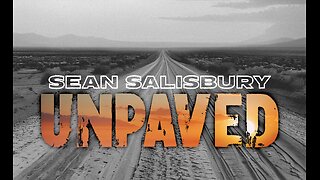Premium Only Content

Scheherazade! (Rimsky-Korsakov) HD Beautiful Classical Music With Nature Video!
Nikolai Andreyevich Rimsky-Korsakov was a Russian composer, a member of the group of composers known as The Five. He was a master of orchestration. His best-known orchestral compositions—Capriccio Espagnol, the Russian Easter Festival Overture, and the symphonic suite Scheherazade—are staples of the classical music repertoire, along with suites and excerpts from some of his fifteen operas. Scheherazade is an example of his frequent use of fairy-tale and folk subjects.
+
ALBUM SONGS:
Scheherazade (Rimsky-Korsakov)!
+++
Scheherazade, also commonly Sheherazade (Russian: Шехераза́да, tr. Shekherazáda, IPA: [ʂɨxʲɪrɐˈzadə]), Op. 35, is a symphonic suite composed by Nikolai Rimsky-Korsakov in 1888 and based on One Thousand and One Nights, also known as The Arabian Nights. This orchestral work combines two features typical of Russian music and of Rimsky-Korsakov in particular: dazzling, colorful orchestration and an interest in the East, which figured greatly in the history of Imperial Russia, as well as orientalism in general. The name "Scheherazade" refers to the main character "Shahrazad" of the "One Thousand and One Nights". It is considered Rimsky-Korsakov's most popular work.
During the winter of 1887, as he worked to complete Alexander Borodin's unfinished opera Prince Igor, Rimsky-Korsakov decided to compose an orchestral piece based on pictures from One Thousand and One Nights as well as separate and unconnected episodes. After formulating musical sketches of his proposed work, he moved with his family to the Glinki-Mavriny dacha, in Nyezhgovitsy along the Cheryemenyetskoye Lake (near present-day Luga, in Leningrad Oblast. The dacha where he stayed was destroyed by the Germans during World War II. During the summer there he finished Scheherazade and the Russian Easter Festival Overture. Notes in his autograph orchestral score show that the former was completed between June 4 and August 7, 1888. Scheherazade consisted of a symphonic suite of four related movements that form a unified theme. It was written to produce a sensation of fantasy narratives from the Orient.
Initially, Rimsky-Korsakov intended to name the respective movements in Scheherazade "Prelude, Ballade, Adagio and Finale". However, after weighing the opinions of Anatoly Lyadov and others, as well as his own aversion to a too-definitive program, he settled upon thematic headings, based upon the tales from The Arabian Nights.
The composer deliberately made the titles vague, so that they are not associated with specific tales or voyages of Sinbad. However, in the epigraph to the finale, he does make reference to the adventure of Prince Ajib. In a later edition, he did away with titles altogether, desiring instead that the listener should hear his work only as an Oriental-themed symphonic music that evokes a sense of the fairy-tale adventure. He stated "All I desired was that the hearer, if he liked my piece as symphonic music, should carry away the impression that it is beyond a doubt an Oriental narrative of some numerous and varied fairy-tale wonders and not merely four pieces played one after the other and composed on the basis of themes common to all the four movements.” Rimsky-Korsakov went on to say that he kept the name Scheherazade because it brought to everyone’s mind the fairy-tale wonders of Arabian Nights and the East in general. - Wikipedia
+++
Eugene Ormandy (born Jenő Blau; 1899 – 1985) was a Hungarian-born conductor and violinist, best known for his association with the Philadelphia Orchestra, as its music director. The maestro's 44-year association with the orchestra is one of the longest enjoyed by any conductor with a single orchestra. Under his baton, the Philadelphia Orchestra had three gold records and won two Grammy Awards. - Wikipedia
+++
Prof Howdy has uploaded over 4000 Beautiful Romantic H.D. Music Videos for your personal enjoyment! Listening to these is quite similar to listening to Easy Listening FM Radio Stations (and a few AM) during the 1950s & 1960s! Enjoy them all!
-
 LIVE
LIVE
SportsPicks
3 hours agoCrick's Corner: Episode 75
47 watching -
 1:06:30
1:06:30
LindellTV
1 hour agoMIKE LINDELL LIVE AT THE WHITE HOUSE
10.8K -
 1:05:33
1:05:33
Russell Brand
4 hours agoTrump Goes NUCLEAR on China - accuses Xi of CONSPIRING against US with Putin & Kim - SF627
111K42 -
 1:14:47
1:14:47
Sean Unpaved
3 hours agoTrey Wingo's Gridiron Grab
17.2K1 -
 13:07
13:07
Silver Dragons
21 hours agoBullion Dealer Reacts to SILVER PRICE SURGING!
8.84K5 -
 1:06:28
1:06:28
Timcast
3 hours agoTrump Admin Threatens GOP Who Vote To Release Epstein Files
146K116 -
 2:13:09
2:13:09
Side Scrollers Podcast
4 hours agoDruski/White Face Controversy + Women “Experience Guilt” Gaming + More | Side Scrollers Live
31.9K3 -
 1:39:53
1:39:53
The Mel K Show
4 hours agoMORNINGS WITH MEL K - Narratives Implode as Light Shines on Covid Deception 9-3-25
24.9K7 -
 2:25:56
2:25:56
The Shannon Joy Show
3 hours agoExclusive With Congressman Tom Massie: "The Epstein Files Are NOT A Hoax. There Are Real Victims"
16.6K4 -
 1:52:46
1:52:46
Steven Crowder
6 hours agoCongress Drops New Epstein Files and Trump Drops New Bombs on Venezuela Terrorists
344K200